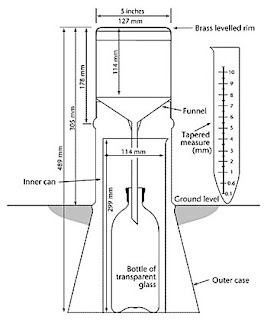Weather Studies
Monday, July 11, 2011
Average Temperature of the week( 1st to 7th june)
1st June: Ave. temp. : 28.2ºC
2nd June : Ave. Temp. :30.0ºC
3rd June: Ave. Temp. : 28.0ºC
4th June: Ave. Temp. : 27.9ºC
5th June: Ave. Temp. : 27.7ºC
6th June: Ave. Temp. :28.4ºC
7th June: Ave. Temp. :28.2ºC
Total: 198.4ºC
Average temperature of the week : 198.4ºC / 7
=28.3ºC(estimated to 1 decimal place)
2nd June : Ave. Temp. :30.0ºC
3rd June: Ave. Temp. : 28.0ºC
4th June: Ave. Temp. : 27.9ºC
5th June: Ave. Temp. : 27.7ºC
6th June: Ave. Temp. :28.4ºC
7th June: Ave. Temp. :28.2ºC
Total: 198.4ºC
Average temperature of the week : 198.4ºC / 7
=28.3ºC(estimated to 1 decimal place)
How to make a Wind Vane( includes general wind direction collection)
Note: the crayons for decorations are optional , may not need it.
^
How it should look like( design is optional!! but the direction marks are a must!)
General wind direction( from 1st to 7th June 2011):
1st June: North
2nd June : North
3rd June: South
4th June: North
5th June: North
6th June: North East
7th June: North East
^
How it should look like( design is optional!! but the direction marks are a must!)
General wind direction( from 1st to 7th June 2011):
1st June: North
2nd June : North
3rd June: South
4th June: North
5th June: North
6th June: North East
7th June: North East
Rainfall collection :)
(From 1st to 7th June 2011)
1st June: 19mm
2nd June: 0mm
3rd June: 28mm
4th June: 40mm
5th June: 88mm
6th June: 40mm
7th June: 21mm
Total amount of rain collected: 236mm
How to make a Rain Gauge:
Step 1: Take a empty plastic bottle of any size( e.g. 1.5 litre bottle(recommended). Cut th top of the bottle about a quater of the way down where it meets the consistent diameter.
Step 2: Remove the bottle cap and invert the upper part of the bottle as the bottom part / as the funnel.
Step 3:Place the rain gauge in an open area where it will collect rain and a place where the trees or buildings would not block the rain gauge.
Step 4: Start measuring. Measure the amount of rainfall collected every morning at a fixed time.
^
how it looks like in the end.
Step 2: Remove the bottle cap and invert the upper part of the bottle as the bottom part / as the funnel.
Step 3:Place the rain gauge in an open area where it will collect rain and a place where the trees or buildings would not block the rain gauge.
Step 4: Start measuring. Measure the amount of rainfall collected every morning at a fixed time.
^
how it looks like in the end.
Sunday, July 10, 2011
Rain Gauge
The Rain Gauge is used to measure rainfall. A Rain Gauge should be placed 30 cm above the ground in an open area where there are no trees or buildings to block the rain, and where only rainfall can enter the rain gauge. The rain collected in the rain gauge is usually measured every morning with a measuring cylinder at a fixed time. The measurement constitutes the daily rainfall and is recorded in millimetres(mm). By adding up the amount of rain collected in a month, we get the monthly rainfall. The total amount of rainfall collected over 12 months is the annual rainfall.
Saturday, July 9, 2011
six's thermometer
A six's thermometer is used to find out the maximum and minimum temperature in a day. It gives three readings, the current temperature, the highest temperature reached since it was last reset, and the lowest temperature reached since it was last reset. It consists of a U-shaped glass tube with two separate temperature scales set along each arm of the U. One of these is for recording the maximum temperature encountered and the other for the minimum temperature. The arms of the U-shaped tube terminate in sealed glass bulbs. The bulb at the top of the minimum reading scale arm is full of alcohol, the other contains a vacuum.
Subscribe to:
Posts (Atom)



